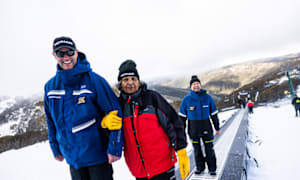SPRING is the perfect time to get out and about on the bike, but it can also bring some unwelcome hazards for bike riders – of the feathered kind.
Whilst the magpie swooping season can prevent some bike riders from enjoying the pleasures of riding the local roads and trails, cycle safety advocacy group, RoadSafe North East, says cyclists should keep riding but take extra care in magpie swooping ‘hot spots’.
According to RoadSafe North East spokesperson John Weinert, advice given about avoiding magpie attacks varies widely and is often contradictory.
He said some suggest speeding up or slowing down, traveling in groups or going solo, staying on your bike or getting off and walking.
"Other recommendations are more practical, like posting on social media a local 'magpie map' to alert others, or taking a different route until the nesting season ends, typically by November," he said.
Latest Stories
“One of the most popular tips is to attach cable ties or pipe cleaners to your helmet, while others believe flashing lights can scare magpies away.
"We have also heard that blowing a whistle can keep a swooping bird away.
"There’s also the idea of attaching a flag to your bike that’s taller than you are.
"Unfortunately, experts say there’s little evidence to suggest these tactics are consistently effective, and many of them aren’t very practical."
Studies have shown that magpies have excellent memories and can remember faces for a long time, so if a magpie has swooped at someone before, or a person resembles someone they’ve attacked in the past, there’s a good chance they’ll target them again.
Magpies are intelligent and fiercely territorial; they may swoop at people up to 100 metres away from their nest.
Most attacks come from male birds, identified by the white markings on the back of their necks, while females have grey markings.
Magpies see cyclists and walkers as threats to their young, so they swoop in various locations—urban and rural, parks, gardens, bike paths and even schools.
While some unconventional strategies may work for certain people, the best advice is to respect these birds and all wildlife. To stay safer:
• Be aware of known swooping areas, give magpies space, and take a detour until their chicks leave the nest.
• If you find yourself in a swooping zone, dismount your bike and calmly and quickly walk through the area.
• Wear glasses or sunglasses to protect your eyes.
• Ride in a group.
If you do get attacked:
• Stay calm and avoid running, as that might provoke further aggression.
• Quickly and calmly exit their territory.
• Don’t wave your arms or shout.
And remember, all native wildlife in Victoria is protected by law, so it is illegal to harass or harm native birds and other wildlife without proper authorisation and penalties apply.
Bird swooping: know what to expect this spring
EVERY spring native birds such as magpies, masked lapwings and butcherbirds may swoop during their breeding season.
Simon Ruff, senior wildlife projects officer at the Department of Energy, Environment and Climate Action (DEECA) said the birds swoop to defend their eggs and chicks for a short time while their young are most vulnerable.
“While swooping is unsettling, it’s normal behaviour for a range of native birds, warning people and animals not to come near their young...it’s rare for birds to make contact,” he said.
If you are worried about being caught out by a protective bird this spring, here are some steps you can take to feel safe, while also helping our native birds:
• Know your local swooping hotspots and avoid the area;
• Move quickly but do not run if you find yourself close to a swooping bird;
• Wear protective head and eye coverings;
• Don’t harass birds – this can make swooping worse;
• Don’t feed the birds and do not destroy their nests.
Report a swooping incident on Victoria’s interactive swooping bird map by visiting: https://www.wildlife.vic.gov.au/managing-wildlife/swooping-birds.















